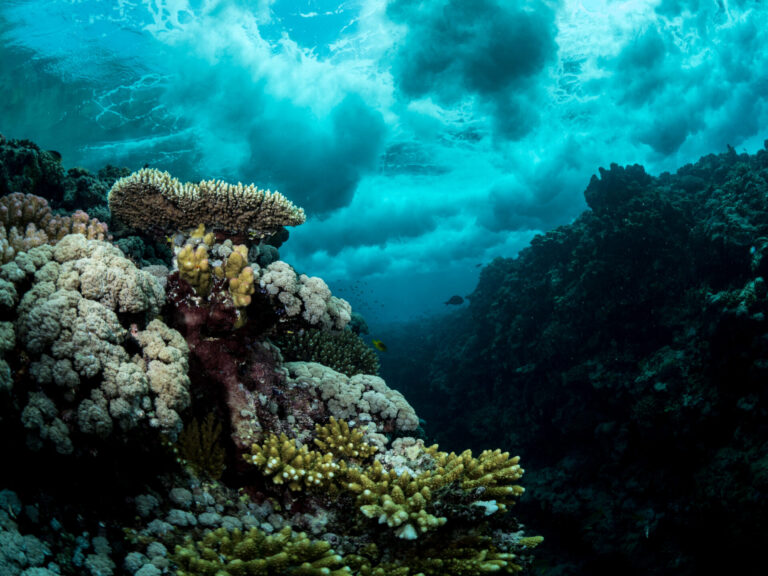Marine Science
Discovering a new coral species
A coral named for KAUST could provide a glimpse of future reef conditions under climate change.


The septa – vertical plates like the spokes of a wheel – on the coral skeleton provided an important clue for a new species.
© 2015 KAUST
Jessica Bouwmeester was investigating the timing of Red Sea coral spawning as a PhD student at King Abdullah University of Science and Technology in 2011 when she noticed something different about one of her coral samples.
“I thought I had collected the coral Cyphastrea microphthalama, but when I checked the images of my underwater camera I noticed the number of septa was wrong,” says Bouwmeester.
Septa are vertical plates on the rocky skeletal structure, the corallite, under each living coral polyp, which converge from the edge of the corallite to the centre like the spokes of a wheel. The species that Bouwmeester thought she had collected has 10, and other closely related species have six, but her sample had eight. She could find no record of any coral species with eight septa, so after consultation between Bouwmeester and several coral experts it was determined to be a new species1.
Bouwmeester and her supervisor Michael Berumen from KAUST named the new coral Cyphastrea kausti.
The new species is yellow, brown or cream in colour, and generally grows on inclined reef surfaces, in clusters 10-60 cm across, but the individual polyps are small, just 1.6 mm in diameter.
Although some of its closest known relatives, including C. microphthalama, are found throughout the Red Sea, and across the Indo-Pacific Ocean as far east as Tahiti, C. kausti appears to be restricted to the central and northern Red Sea. Little is known so far about its ecology, but Berumen says that the fact that it lives only in the Red Sea indicates that it is adapted for saltier and warmer water than corals from elsewhere.
Berumen says identifying and cataloguing new species is important for conservation efforts in the Red Sea. “We need to know what species there are in the Red Sea,” he says. “It’s very difficult to protect something if you don’t know it exists!”
But organisms that live only in the Red Sea, like C. kausti, can also provide insight into how species adapt to the particular environmental conditions there. They may help shed light on which species will be best able to survive as global ocean temperatures rise.
The unique and extreme environmental conditions in the Red Sea may provide a glimpse into what the rest of the world’s reefs will experience in the next few decades due to climate change,” says Berumen.
References
- Bouwmeester, J., Benzoni, F., Baird, A.H., Berumen, M.L. Cyphastrea kausti sp. n. (Cnidaria, Anthozoa, Scleractinia), a new species of reef coral from the Red Sea. ZooKeys 496, 1-13 (2015). | article
You might also like

Marine Science
A place to trial hope for global reef restoration

Marine Science
Reef-building coral shows signs of enhanced heat tolerance

Marine Science
Plastic-munching bacteria found across the seven seas

Marine Science
AI reveals the universal beauty of coral reef growth

Marine Science
Tiny crabs glow to stay hidden

Marine Science
Mass fish deaths linked to extreme marine heatwave in Red Sea

Marine Science
Weeding out the secrets of Red Sea macroalgae

Bioscience



